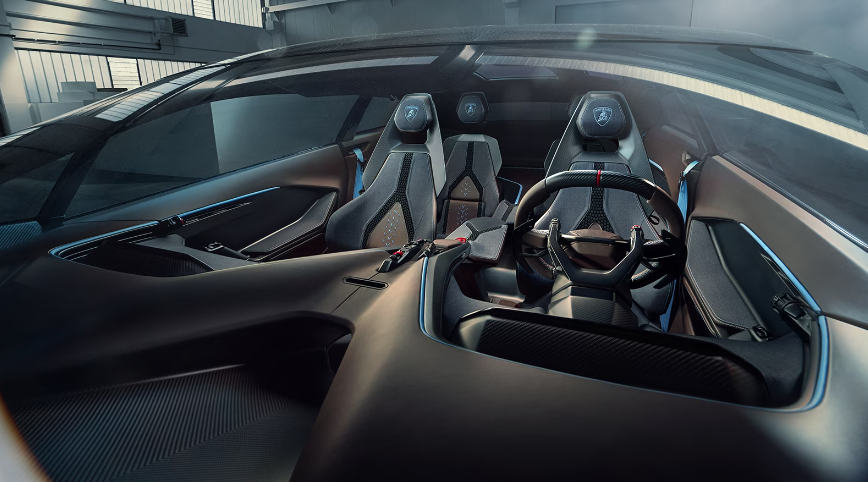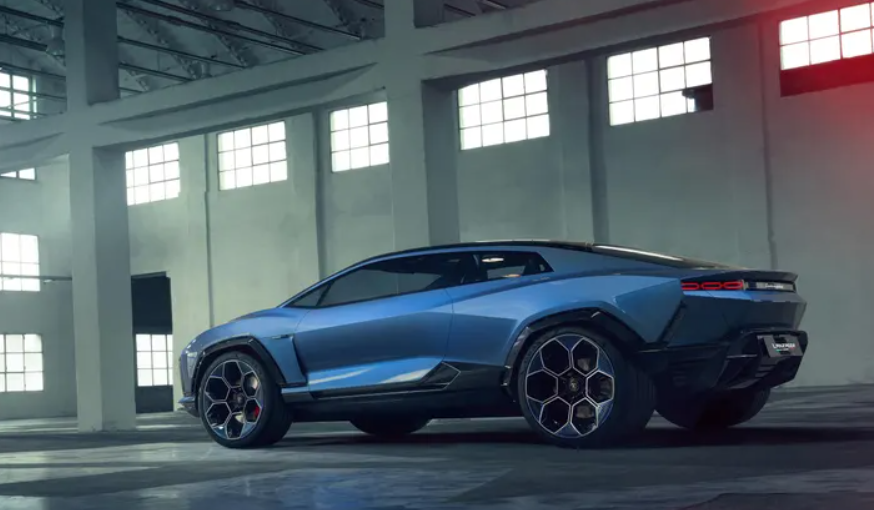We’ve all been burned previously by a stunning 2-in-two Lamborghini GT design, the gorgeous Asterion concept car in the year 2015. The Asterion promised an upcoming model that was a hybrid Lamborghini grand tourer coupe but it didn’t come to fruition as an actual production version (though the hybrid spirit is still present in a manner that is evident as seen in the Urus SUV, and the brand-new Revuelto V-12 supercar plug-in). The 2028 Lamborghini Lanzador concept’s turn to enthrall us with what a Lamborghini that is all electric could be, with even a name that’s fit for prescription drugs.

2028 Lamborghini Lanzador Redesign
The exterior styling of the brand new Lanzador “ultra” GT EV which is what Lambo has dubbed it, evokes iconic elements of 2015. Asterion GT hybrid design, which includes a similar shade of blue paint that appears to have been carried over from concept to concept (called Azzurro Abissale in this application). But, the Lanzador has a wider intake and smaller headlights that are closer to the Urus and have the cab-forward shape that lifts the windshield above the front axle.
The lighting elements at the rear on the Asterion are now shifted to six red ovals, providing an individual rear light design compared to the angle of the Revuelto arrangement. The Lanzador is also able to be seated and ride slightly higher and has a tall interior floor thanks to the design of the battery pack that resembles a sled chassis, which makes it look like an Urus coupe. However, Lamborghini does not specify that the highest point on the roof to be less than 5 feet high.
Exterior & Interior
It’s the Lanzador title is Spanish and, while it could be translated as “pitcher” (as in baseball) In this instance, it’s named after the time of an award-winning bull, which won “best bull” honors at the 1993 Madrid Fair, continuing Lamborghini’s long-standing relationship with bullfighting. In recognition of the literal meaning behind the word, Lamborghini also said the name is meant to convey the way Lamborghini will propel itself “into the future.” Whatever the case, it’s an appropriately sporty title for a car that is claiming to be an ultra GT vehicle that’s pioneering in the field of electric vehicles for Lamborghini.
It’s designed as its “everyday driver” Lambo, offering the capabilities of a sports vehicle with an extra level of versatility, without being a “full SUV” like the Urus. Electric drivetrains of the brand-new Lanzador come with a powerful e-motor for each axle, delivering up to 1 megawatt of energy consumption which is roughly 1,340 horsepower across the four wheels. It also has active torque control to keep things in check. Specifications like torque, range, and other information aren’t yet available.

The Interior of the brand new Lanzador GT is inspired by different Lamborghinis from the past (as spaceships) It’s therefore no reason to be surprised that it is designed to create the impression of an aircraft pilot. This EV GT offers a 2+2 layout that can seat up to four people, with the rear seats designed to be able to accommodate non-organic items like sporting devices (think golf clubs) and golf clubs. A frunk is also located under the hood, which is connected with a large-opening tailgate in the rear and with a rear seat that can be adjusted to allow for greater cargo capacity.
The dashboard in the cabin is slim so that it is light and is characterized by a Y-shaped design at the top of the console. The driver’s hand is a “pilot unit” for the control of the climate and entertainment system that retracts automatically and is removed in certain driving modes. Doors, seats as well and the dashboard are clad in Italian-sourced sustainably Merino wool that is dyed with recycled colors and threaded stitching. The foam used for seating is made of recycled fibers that have been 3D printed and is available in environmentally friendly leather from Italy. Structural carbon accents are made using two layers of regenerated carbon-composite material that Lamborghini claims.
Control System
The details of the car’s components, both software and hardware, aren’t clear at the moment, but there are some things to keep in mind. Lamborghini will increase the range of sensors it uses to support its Lamborghini Dinamica Veicolo Integrata (LDVI) driving dynamics control system. The system promises to provide customers with more control over the relationship between the vehicle and the road and enhance feedback between the driver and vehicle. The new sensors are placed behind glass panels that are located at the front of the vehicle.
A set of aerodynamic components will supply the Lanzador with a greater cornering force and lower air resistance at the highest speeds or optimized conditions for the best range. A sophisticated aero cooling system at the front is hidden behind the air shutter on the front, and an adjustable splitter. Active suspension systems can be adjusted by the driver via the steering wheel’s controls.

2028 Lamborghini Lanzador Rumors
Contrary to the sketchy idea for the Asterion hybrid in 2015 that was only flirting with reality Lamborghini is confident that this time its Lanzador concept will be in production by 2028, as per the announcement. “For us, the fourth model is the logical extension of the existing portfolio the perfect link between Urus and our super sports cars,” claims the CEO Stephan Winkelmann.
The plant will be located at The company’s Sant’Agata Bolognese facility, which will be enlarged for Lanzador production in the next couple of years. For the final specifications, it will be necessary to wait until close to the date of launch since EV technology is expected to swiftly change its capabilities in Lanzador’s favor in the next four years.